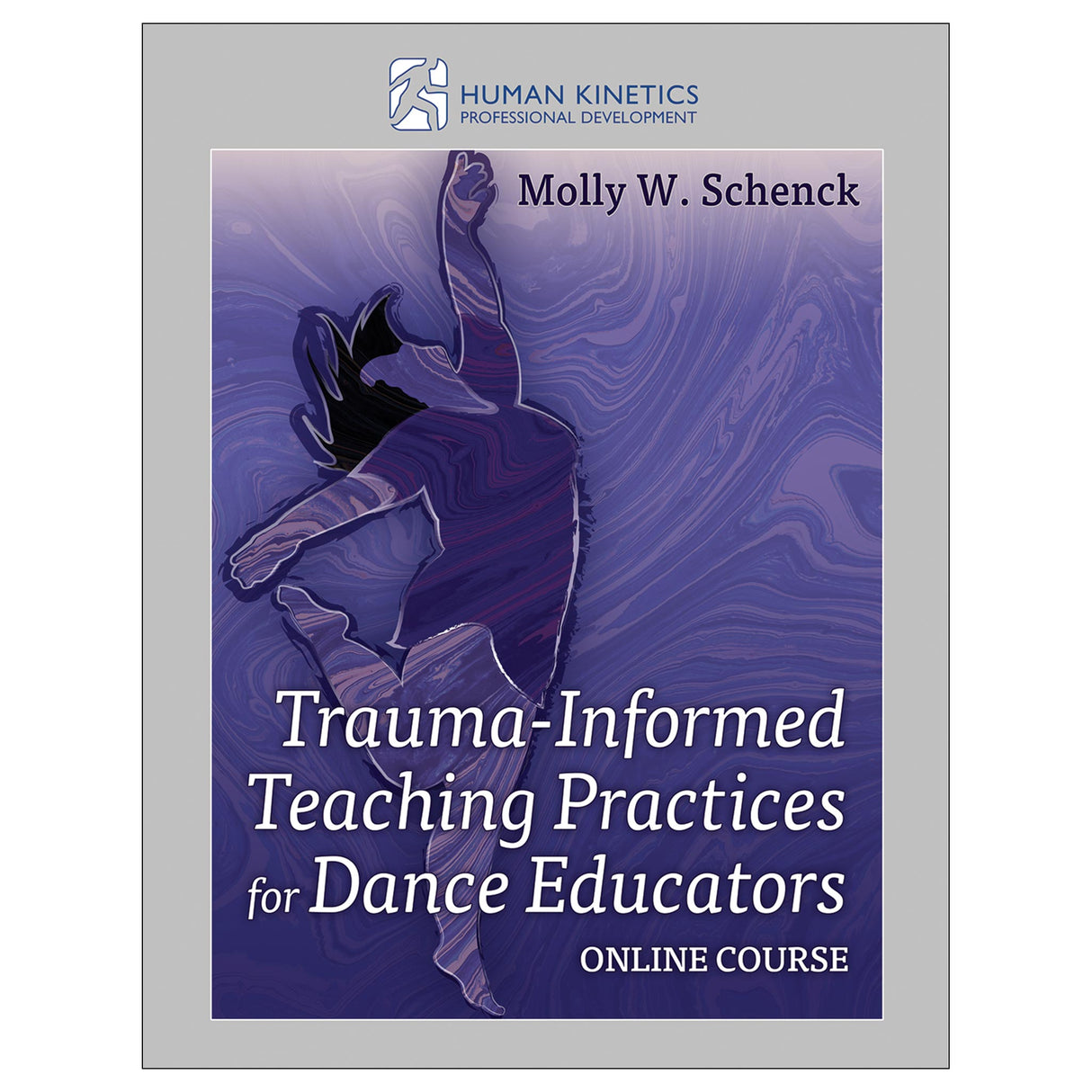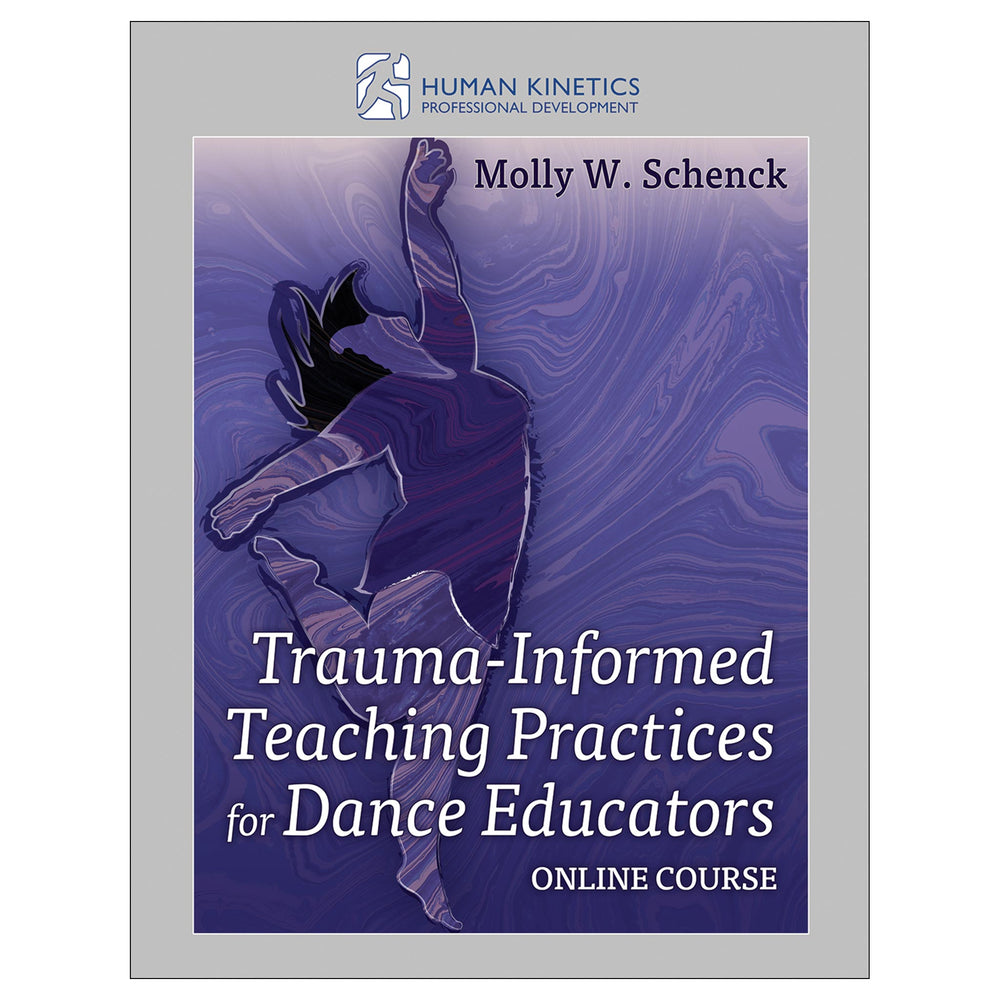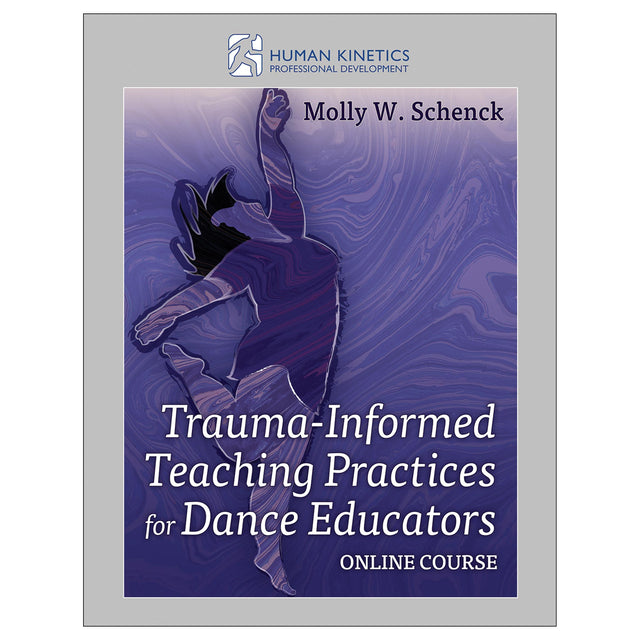Online Course
Trauma-Informed Teaching Practices for Dance Educators Online Course
Author: Molly W. Schenck
$62.95 CAD
Unit price
/
Unavailable
Online Course
$62.95 CAD
$62.95 CAD

Online Course
Teaching through a pandemic has increased awareness of the need for more sustainable teaching methods that can be adapted to unpredictable circumstances in educational settings.
Trauma-Informed Teaching Practices for Dance Educators Online Course offers dance educators the information and tools they need to integrate trauma-informed approaches into their classrooms and rehearsals. These trauma-informed practices can be embedded into daily classroom, rehearsal, and performance interactions in an effort to reduce the impact of stress, trauma, and burnout.
Understanding Stress and Trauma
The goal of this course is “to help dance educators understand how stress, trauma, and burnout can show up in their classrooms, rehearsals, and performances as well as in themselves,” says Molly Schenck, course author.
Facilitator Guide and Modules
The online course, which is worth six professional development contact hours, comes with a digital facilitator guide. The facilitator guide provides descriptions, pacing, and time recommendations for each of the five modules as well as implementation tips and prompts for discussions and other group work.
The course can be delivered in person through a facilitator, or teachers can work through the course virtually and at their own pace. Each module takes 45 to 60 minutes to complete.
The five modules equip teachers to implement trauma-informed teaching practices into their dance curriculum. These modules
In addition, school districts can purchase a virtual visit with the author, signing on for a virtual hour or more.
Broad Appeal
Trauma-Informed Teaching Practices for Dance Educators Online Course has broad appeal to teachers in many dance styles and genres—as well as arts educators beyond dance, such as music and theater teachers. Coming at a much-needed time, this course will help teachers navigate stress, trauma, and burnout in classes, rehearsals, performances, and themselves through sustainable and compassionate practices.
Trauma-Informed Teaching Practices for Dance Educators Online Course offers dance educators the information and tools they need to integrate trauma-informed approaches into their classrooms and rehearsals. These trauma-informed practices can be embedded into daily classroom, rehearsal, and performance interactions in an effort to reduce the impact of stress, trauma, and burnout.
Understanding Stress and Trauma
The goal of this course is “to help dance educators understand how stress, trauma, and burnout can show up in their classrooms, rehearsals, and performances as well as in themselves,” says Molly Schenck, course author.
Facilitator Guide and Modules
The online course, which is worth six professional development contact hours, comes with a digital facilitator guide. The facilitator guide provides descriptions, pacing, and time recommendations for each of the five modules as well as implementation tips and prompts for discussions and other group work.
The course can be delivered in person through a facilitator, or teachers can work through the course virtually and at their own pace. Each module takes 45 to 60 minutes to complete.
The five modules equip teachers to implement trauma-informed teaching practices into their dance curriculum. These modules
- introduce teachers to critical information on the theories of trauma-informed teaching,
- illustrate how to integrate the teaching practices into their classrooms and embed them in their curriculum and classroom culture,
- guide teachers in implementing the teaching practices in rehearsals and performances, and
- instruct them on how to evolve their trauma-informed teaching practices.
In addition, school districts can purchase a virtual visit with the author, signing on for a virtual hour or more.
Broad Appeal
Trauma-Informed Teaching Practices for Dance Educators Online Course has broad appeal to teachers in many dance styles and genres—as well as arts educators beyond dance, such as music and theater teachers. Coming at a much-needed time, this course will help teachers navigate stress, trauma, and burnout in classes, rehearsals, performances, and themselves through sustainable and compassionate practices.
Audience
Resource for dance educators, performing arts educators, studio owners and teachers, dance company leadership, arts administrators, physical educators, and psychologists and therapists who work with dancers. Facilitator Guide
Course Introduction
Module 1. Introduction to Trauma-Informed Teaching
1.1 What Trauma-Informed Teaching Is and Is Not
1.2 Defining Scope of Practice and Purpose
1.3 Understanding the Autonomic Nervous System Through Polyvagal Theory
1.4 Theory in Action
1.5 SEL Connection
Knowledge Check
Module 2. Integrating Trauma-Informed Teaching Practices Into the Classroom
2.1 Introduction to Applying a Trauma-Informed Teaching Approach
2.2 Importance of Taking Care of Teachers
2.3 Strategies for Teachers
2.4 Techniques to Apply While Teaching
2.5 Empathy, Compassion, and Sympathy
2.6 SEL Connection
Knowledge Check
Module 3. Embedding Trauma-Informed Teaching Into the Curriculum and Classroom Culture
3.1 Trauma-Informed Creative Practices
3.2 Classroom Structure
3.3 Language and Physical Touch
3.4 Tools and Approaches to Practice
3.5 SEL Connection
Knowledge Check
Module 4. Implementing Trauma-Informed Teaching Practices in Rehearsals and Performances
4.1 Contextualizing Trauma-Informed Teaching Practices in Rehearsals and Performances
4.2 Rehearsal Structure
4.3 Performance Considerations on Stage, Backstage, and in the Audience
4.4 Creative and Solution-Focused Problem-Solving
4.5 SEL Connection
Knowledge Check
Module 5. Continuing Practices for Evolving Trauma-Informed Teaching Practices
5.1 Importance of Contemplative Practices
5.2 Reflecting on Classroom Culture
5.3 Reflecting on Past Behavior
5.4 Unpacking Difficult Situations
5.5 SEL Connection
Knowledge Check
Wrap-Up
Resources
References
Comprehensive Quiz
Optional Survey
Course Introduction
Module 1. Introduction to Trauma-Informed Teaching
1.1 What Trauma-Informed Teaching Is and Is Not
1.2 Defining Scope of Practice and Purpose
1.3 Understanding the Autonomic Nervous System Through Polyvagal Theory
1.4 Theory in Action
1.5 SEL Connection
Knowledge Check
Module 2. Integrating Trauma-Informed Teaching Practices Into the Classroom
2.1 Introduction to Applying a Trauma-Informed Teaching Approach
2.2 Importance of Taking Care of Teachers
2.3 Strategies for Teachers
2.4 Techniques to Apply While Teaching
2.5 Empathy, Compassion, and Sympathy
2.6 SEL Connection
Knowledge Check
Module 3. Embedding Trauma-Informed Teaching Into the Curriculum and Classroom Culture
3.1 Trauma-Informed Creative Practices
3.2 Classroom Structure
3.3 Language and Physical Touch
3.4 Tools and Approaches to Practice
3.5 SEL Connection
Knowledge Check
Module 4. Implementing Trauma-Informed Teaching Practices in Rehearsals and Performances
4.1 Contextualizing Trauma-Informed Teaching Practices in Rehearsals and Performances
4.2 Rehearsal Structure
4.3 Performance Considerations on Stage, Backstage, and in the Audience
4.4 Creative and Solution-Focused Problem-Solving
4.5 SEL Connection
Knowledge Check
Module 5. Continuing Practices for Evolving Trauma-Informed Teaching Practices
5.1 Importance of Contemplative Practices
5.2 Reflecting on Classroom Culture
5.3 Reflecting on Past Behavior
5.4 Unpacking Difficult Situations
5.5 SEL Connection
Knowledge Check
Wrap-Up
Resources
References
Comprehensive Quiz
Optional Survey





